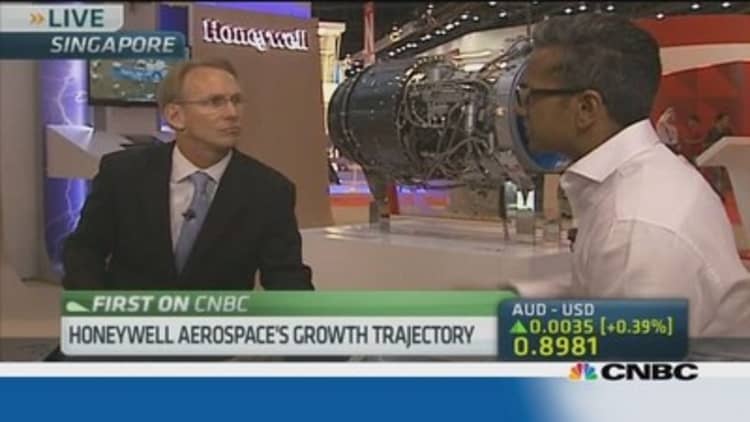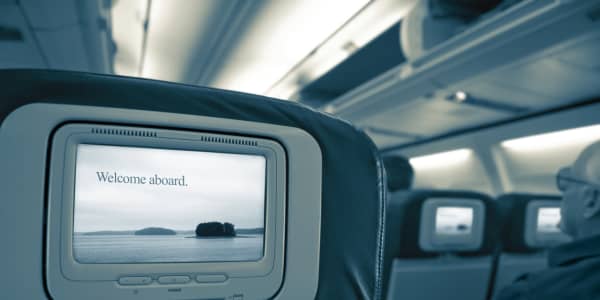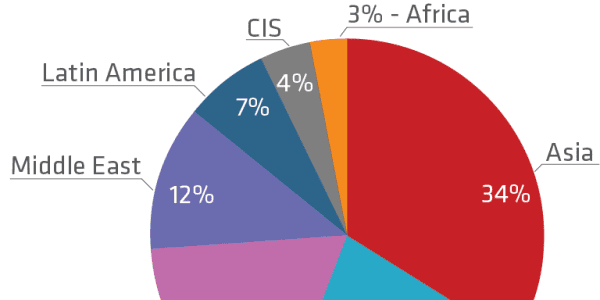As competition between budget airlines heats up, the appeal in going low-cost for the long-haul appears to be growing.
The long-distance unit of Air Asia, a Malaysian budget carrier, is close to unveiling plans for an offshoot that connects Bali to Hong Kong, Australia and Japan, the Wall Street Journal reported last week.
(Read more: Singapore Airshow 2014)
The development is not one confined to Asia. Norwegian Air Shuttle, which focuses on low-cost flights within Europe, is planning to expand its model to the U.S. and Asia, according to recent media reports.
Analysts say that while budget airlines have largely focused on generally short flights, they are starting to target long-haul routes to take advantage of price-conscious consumers.

Singapore Airlines subsidiary Scoot for instance only focuses on medium-to-long haul flights.
It says the aircraft used is the key to doing low-cost, long-haul travel well.
"One of the great secrets is the aircraft," Scoot CEO Campbell Wilson told CNBC this week.
"When you're flying distances of five hours or more, you're using a wide body aircraft, a 777 or 787," he said. "It's a completely different ambiance on board, more lavatories for one, so it's a very different experience than flying on a short haul LCC (low cost carrier)."
(Read more: New Dreamliner fleet 'game changer' for Scoot: CEO)
In December AirAsia announced an order for 25 Airbus A330-300 aircraft in a deal valued at $6 billion. The company said it was a bid to set up a low-cost equivalent to carriers such as Emirates.
For some bigger airlines, competition from budget airlines going long-haul is not a major concern.
"We are already very low cost. We are about 20 percent less expensive than some of the major airlines," Temel Kotil, Turkish Airlines CEO told CNBC on the sidelines of the Singapore Air Show this week. "Our product is very good, our costs are low – we work 24 hours a day, use new technology, optimization, that brings costs down."
And using technology effectively to contain fuel costs is key for those budget carriers expanding into long-haul travel, analysts say.

"As we see some of the low-cost carriers move into long-haul flights, some of the solutions we'll provide that is of interest is the GX Aviation system, which allows people to stay connected on long-haul flights," said Brian Davis, vice president, Asia-Pacific at Honeywell Areospace, on the sidelines of the Singapore Airshow.
"Products that help fuel efficiency for instance are also key to their [budget airlines] strategy so they can maintain a competitive environment," he added.
Going long-haul is certainly not without its risks, as Air Asia knows. It suspended flights to Europe during the global financial crisis.
(Read more: 'Full-fledged' war awaits India airline sector)
Competition
The environment is certainly a competitive one for budget airlines operating in Asia right now.
Nearly all of Asia's premium carriers are investing in budget airlines.
Taiwan's China Airlines and Singapore's Tiger Airways plan to set up a Taiwan-based budget carrier, while Scoot plans to establish a new Bangkok-based low-cost carrier with Thailand's Nok Airlines.
According to consulting firm CAPA Centre for Aviation, budget carriers now account for more than half of the passengers within Southeast Asia, including domestic and international passengers flying between the 10 ASEAN countries.
(Read more: Overcapacity a threat to airline sector: Garuda CEO)
"When you look across the developed world, about 26 percent of domestic seats are typically attributable to a low-cost carrier," said Davis at Honeywell. "But in four key countries in the Asia-Pacific – Thailand, Indonesia, Malaysia and the Philippines – we see well over 55 percent of the seats in those markets are already dedicated to low cost carriers."
For others, the competition between airlines in Asia can only mean one thing: consolidation.
"There is going to be a consolidation. You see it right now in Indonesia – some airlines are closing their routes and that's how the market will react," Emirsyah Satar President & CEO, of Indonesia's flag carrier Garuda told CNBC this week.
-By CNBC's Dhara Ranasinghe. Follow her on Twitter at @DharaCNBC





